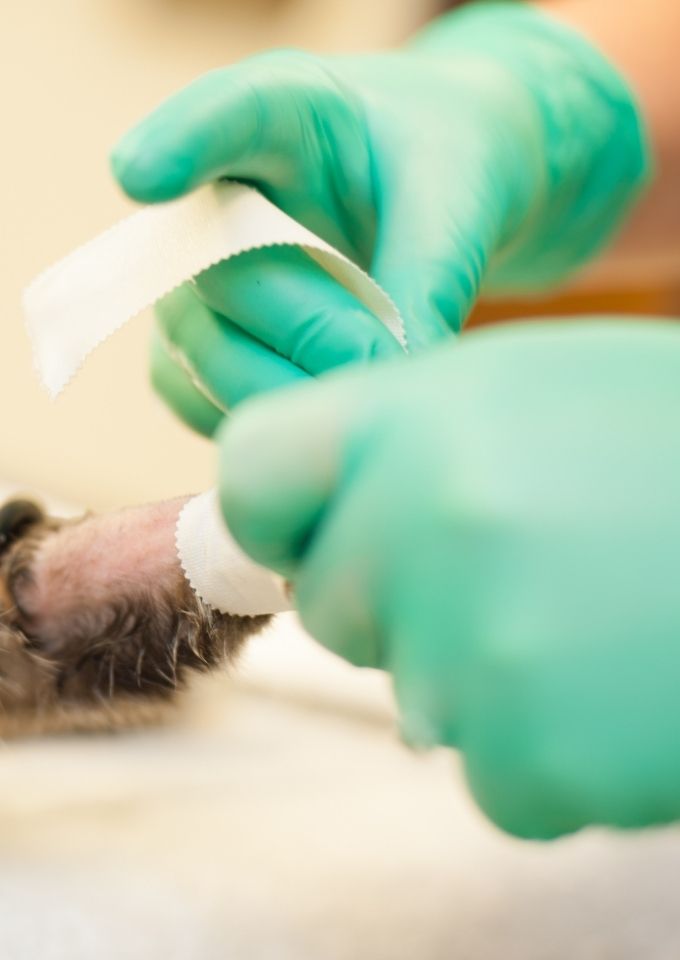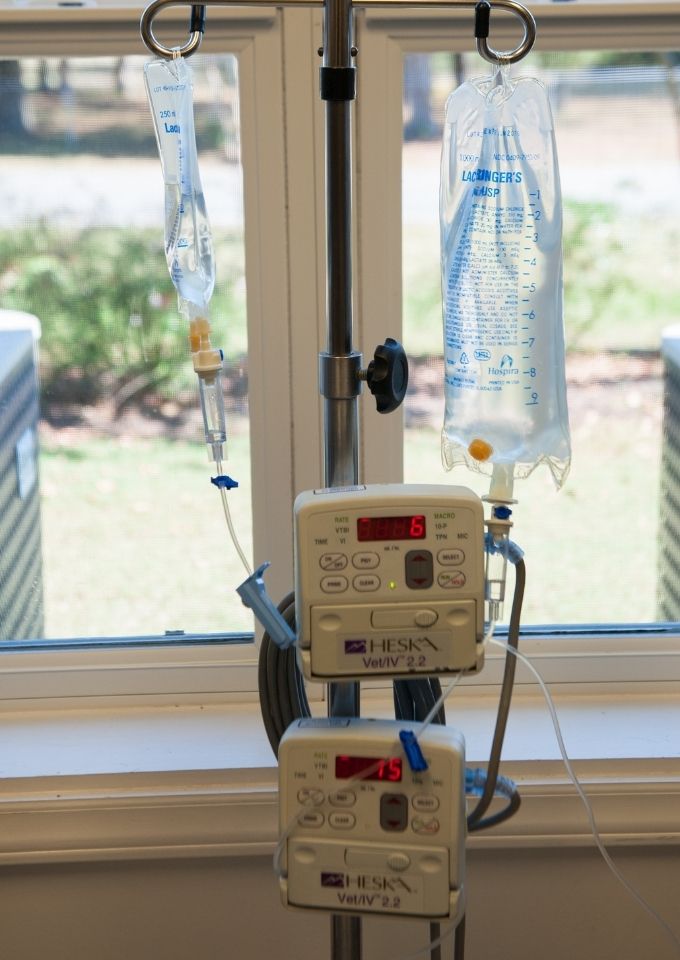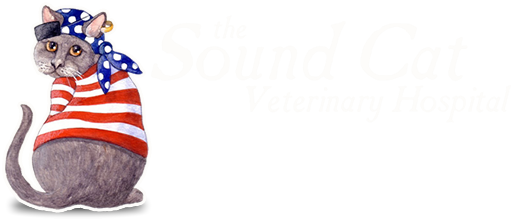The Sound Cat Veterinary Hospital
Feline Renal Failure

Veterinary Services
Feline Renal Failure
Your cat has been diagnosed with either acute or chronic renal (kidney) failure.
Acute renal failure occurs when an insult immediately damages the kidneys, such as a toxin or an infection. Chronic renal failure is insidious since the cat may have kidneys that have been affected by a disease process for quite a long time before clinical signs become apparent. Often renal compromise can be detected on routine blood chemistry performed while the cat is still healthy. The kidneys are what we call a redundant organ. Any animal can live normally with only one kidney so long as it remains healthy. One begins to see clinical signs characteristic of renal failure when 75% of the working tissue of both kidneys has been damaged.
Clinical signs of renal failure can include: lethargy, weight loss, increased water consumption, increased dilute urine output, dehydration, vomiting, gastric and oral ulcers, hypertension, anemia, uremic breath, and coma.

The kidneys have several functions:
1. Filter the blood to remove nitrogen waste products (by-product of protein metabolism).
2. Conserve body fluids by reabsorbing water and electrolytes from the filtered blood and excreting certain minerals.
3. Regulate the acid/base balance of the body (the kidney has its own buffering system).
4. Prevent anemia by releasing a hormone called erythropoietin that in turn directs the bone marrow to produce red blood cells.
5. Maintain normal blood pressure by releasing a hormone called renin.
The kidneys can compensate for decreased function (loss if kidney tissue) due to disease or aging by opening more capillary beds within the remaining kidney tissue thus allowing more blood to flow through. This phenomenon is called “intrinsic auto regulation”. After a certain point, however, the remaining kidney tissue is working maximally. This is when clinical signs start.
Our goal in treating chronic renal failure is to delay the progression of changes by “protecting” the kidneys, to assist the cat’s hydration, and to correct electrolyte and mineral imbalances.
Certain tests are run to evaluate your cat’s renal function. The complete blood count (CBC) screens the blood for anemia and infection. The serum chemistry screens the renal function by measuring the nitrogen waste products accumulating in the blood (BUN – blood urea nitrogen- and Creatinine). Also, the electrolytes are measures to detect abnormalities, particularly of Potassium. Other minerals are measured, specifically Phosphorus and Calcium.
His/her blood pressure will be checked because often cats with chronic renal failure are hypertensive and require medication to lower their blood pressure.
TREATMENT
Diuresis:
It is impractical to dialyze in practice since these machines require total blood filtration and are prohibitively expensive. We can, however diuresis. This means hospitalizing the cat for 3 – 5 days during which time intravenous balanced salt solution is administered around the clock. This helps to dilute the nitrogen waste and allows the kidneys to excrete a higher fraction of the waste. During this period, any electrolyte or acid/base imbalances are corrected. After the 3 or 5-day period, serum chemistries are repeated to evaluate response to diuresis. If a favorable response is seen, then the cat may be discharged for home diuresis. If the disease is not so severe, you may skip the hospitalization and go straight to home diuresis. This simple procedure takes no longer than 10 minutes every day or every other day and consists of administering the solution, usually lactated ringers solution subcutaneously (under the loose skin over the back).
Restricted protein diet:
These diets are formulated with less protein and lower phosphates to ease the workload on the kidney. A new diet also has a “nitrogen trap” system that allows the protein to be excreted by the gut rather than the kidneys.
Potassium supplementation to replace renal potassium loss. Low potassium caused weakness and further damages the kidney.
Phosphorus binders like amphojel are administered to promote the excretion of calcium. Increased phosphorus also depresses appetite. Calcium and phosphorus must remain in a 2:1 ratio.
Calcitriol:
A drug that may be used to increase serum calcium, which in turn will lower serum phosphorus.
Pepcid:
Given daily to decrease the amount of acid produced by the stomach that has been increased by the circulating renal toxins. A drug for high blood pressure. If the blood pressure is not normalized as the BUN and Creatinine come down, then the cat may need some medication to control blood pressure.
Winstrol:
Winstrol is an anabolic steroid that can stimulate appetite and help prevent weight loss. Other appetite stimulants may be used.
Erythropoietin:
This is the hormone that stimulates the bone marrow to produce red blood cells. The cat will need injections of this hormone if he/she is anemic.
Omega Fatty Acids:
These supplements are antioxidants and have been shown to decrease the progression of kidney disease as well as assist in controlling hypertension.
The prognosis is highly variable, depending on your cat’s response to treatment and your ability to continue therapy at home.
